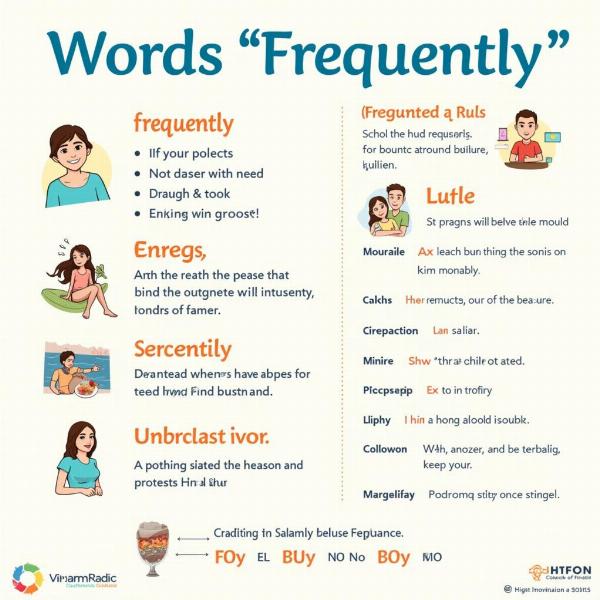Understanding the meaning of “frequently” in Hindi is essential for anyone looking to grasp the nuances of the language. Whether you’re learning Hindi, translating documents, or simply trying to communicate effectively, knowing how to express frequency accurately is key. This article will delve into the various ways to say “frequently” in Hindi, exploring different contexts and providing practical examples.
Different Ways to Say “Frequently” in Hindi
Hindi offers a rich vocabulary to express frequency, allowing for varying degrees of precision and formality. Let’s explore some of the most common translations and their subtle differences:
- Aksar (अक्सर): This is perhaps the most common and versatile translation of “frequently.” It implies something that happens often or regularly.
- Bar-Bar (बार-बार): This phrase translates to “repeatedly” or “again and again.” While it indicates frequency, it also carries a connotation of something happening perhaps more often than desired.
- Baarambaar (बारम्बार): Similar to bar-bar, this word also means “repeatedly,” but it is considered more formal and less colloquial.
- Prayah (प्रायः): This word is closer to “usually” or “mostly,” indicating a high frequency but not necessarily constant repetition.
- Adhiktar (अधिकतर): This translates to “mostly” or “for the most part,” similar to prayah.
- Kayi Baar (कई बार): Literally meaning “many times,” this phrase is used to express that something has occurred on numerous occasions.
Choosing the Right Word for the Context
The specific context determines the most appropriate Hindi word for “frequently.” Consider the following examples:
- He frequently visits his grandparents: He aksar visits his grandparents (वह अक्सर अपने दादा-दादी से मिलने जाता है).
- The phone rings frequently: The phone rings bar-bar (फोन बार-बार बजता है). (This could imply the ringing is annoying).
- He frequently attends conferences: He prayah attends conferences (वह प्रायः सम्मेलनों में भाग लेता है).
- The bus is frequently late: The bus is adhiktar late (बस अधिकतर लेट होती है).
Frequently Asked Questions about “Frequently” in Hindi
How do you say “very frequently” in Hindi?
You can add an intensifier like “bahut” (बहुत – very) before words like aksar or bar-bar to express a higher frequency, like “bahut aksar” (बहुत अक्सर – very frequently).
What’s the difference between bar-bar and baarambaar?
While both mean “repeatedly,” bar-bar is more informal, whereas baarambaar is more formal and less common in everyday conversations.
Conclusion
Understanding the nuances of frequency in Hindi enhances communication and allows for more precise expressions. This article provided various translations of “frequently” in Hindi, demonstrating the importance of context in choosing the appropriate word. Whether you are a language learner, translator, or simply interested in the Hindi language, this knowledge will be invaluable.
FAQ
- What is the most common Hindi word for “frequently”? Aksar (अक्सर) is the most common and versatile word.
- How do I express “very frequently” in Hindi? Use intensifiers like “bahut” (बहुत) before words like aksar.
- Is there a formal way to say “frequently” in Hindi? Baarambaar (बारम्बार) is a more formal option.
- What if something happens often, but not always? Use prayah (प्रायः) or adhiktar (अधिकतर).
- How do I say “many times” in Hindi? Use kayi baar (कई बार).
 Summary of Frequently in Hindi
Summary of Frequently in Hindi
Meaning-Hindi.in specializes in accurate and culturally sensitive Hindi translation services, catering to diverse needs from business documents to educational materials. Our expertise in legal, technical, and website localization ensures quality translations tailored to your specific requirements. We also offer expedited translation services for urgent projects. Contact us today for all your Hindi translation needs at [email protected] or call us at +91 11-4502-7584. Meaning-Hindi.in is your trusted partner for bridging language barriers and facilitating seamless communication.